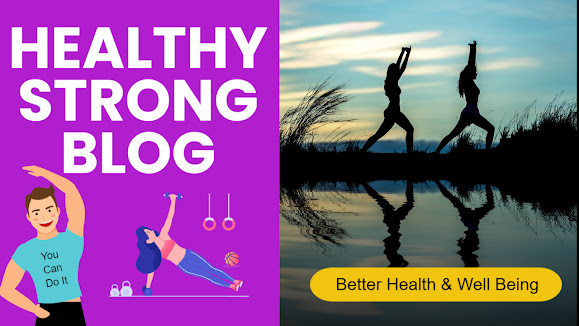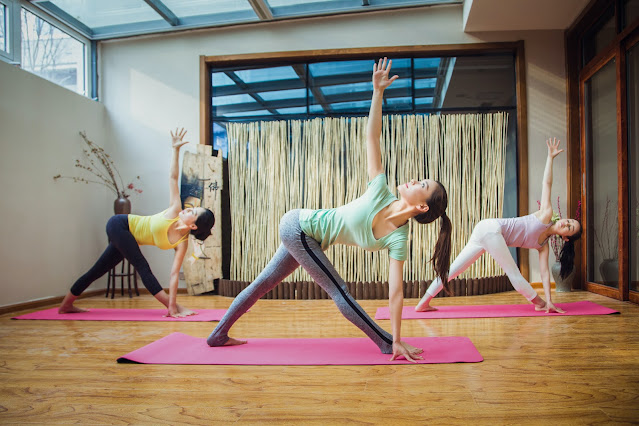Pilates Versus Yoga: Which One Is Right for You?
Are you considering whether to try Pilates or yoga? Both exercise programs have their own set of benefits that can help you achieve your fitness goals. However, which one is right for you?
What Is Pilates?
Pilates is a slow-burning, full-body workout that focuses
on the use of your core muscles and your back. Pilates can help you improve
your flexibility, balance, and posture.
How was Pilates created?
Pilates was created by Joseph Pilates in the early 20th
century. He developed the exercise method as a way to improve physical
strength, flexibility and range of motion, especially for athletes and dancers.
Pilates borrows from both Yoga and gymnastics, but emphasizes control and
precision of movement over the flow and meditation that is found in yoga. It
also focuses on the alignment of the spine, core strength and muscle balance.
Joseph Pilates believed that good posture was essential for good health, so
many of his exercises were designed to improve posture and body awareness.
Is Pilates good for weight loss?
Pilates is an effective form of exercise for weight loss,
as it focuses on strengthening and toning the body while also improving
flexibility and balance. Moreover, since it is low-impact, it can be a great
choice for those who are new to exercising or have injuries or medical
conditions that limit their ability to do high-intensity workouts. Pilates can
help improve posture and circulation, as well as help reduce stress and
anxiety. While it does not burn calories as efficiently as yoga, which is more
aerobic in nature, it still provides numerous health benefits. With regular
practice and dedication, Pilates can be a great way to help you reach your
weight loss goals.
What can one expect from a typical Pilates class?
A typical Pilates class typically involves a series of
low-impact exercises to help target specific muscle groups. Unlike Yoga,
Pilates focuses on precision and control with each movement. Many classes
involve the use of small props such as resistance bands and stability balls to
further challenge the body and focus on core strength. It is a great choice for
those looking to increase their strength and flexibility without the intensity
of other forms of exercise.
What Is Yoga?
Yoga is a type of exercise that originated in India. Yoga is a combination of physical postures, breathing exercises, and meditation to create a holistic approach to wellness. Yoga is often said to improve your flexibility, balance, and strength.
Yoga can also helps reduce stress and anxiety. Yoga classes typically involve stretching and holding poses for a few minutes at a time. The poses are designed to work different areas of the body while encouraging relaxation. Some classes may also include chanting or meditation exercises.
What Are the Benefits of Pilates vs Yoga?
What are some of the popular Yoga exercises?
Yoga is an ancient practice that has been around for centuries, and it is still popular today with many people looking to improve their physical and mental health. Some of the most popular yoga exercises include Sun Salutation, Warrior Pose, Triangle Pose, Tree Pose, and Corpse Pose. Sun Salutation is a series of postures that help to warm up the body and energize the mind.
The Warrior Pose is a
great way to strengthen the legs and core muscles as well as open up the hips.
Triangle Pose helps to increase flexibility in the back and hips while also
improving balance. Tree Pose helps to improve posture and core strength. Finally,
Corpse Pose is a great way to relax and find balance both mentally and
physically at the end of your yoga practice.
Is Pilates or Yoga More Beneficial?
Both Pilates and Yoga are beneficial forms of exercise that can help improve overall physical and mental wellbeing. However, there are a few key differences between the two. Pilates focuses on strengthening the core muscles and improving flexibility, while Yoga combines both physical postures with breathing techniques and meditation to promote relaxation.
Depending on
the individual's goals, either Pilates or Yoga can be more beneficial. For
those looking to improve strength, posture, and balance while also having time
to relax, Yoga may be the better option. For those looking for more intense
workouts with a focus on toning and strengthening the body, Pilates may be more
beneficial.
However, Pilates is a different form of exercise that also
focuses on improving flexibility, balance, and strength. It involves exercises
that are low impact and involve a combination of stretching and strengthening
exercises. The main benefit of Pilates is that it works the entire body as a
unit instead of isolating individual muscles. Though both yoga and Pilates can
be useful for improving flexibility, balance, and strength, it is important to
choose the right form of exercise for your individual needs.
Can Beginners Learn Pilates at Their Own Pace?
Pilates can be an excellent activity for beginners, as it offers a low-impact workout that can be easily tailored to any fitness level. Unlike yoga, which often requires some level of prior knowledge in order to perform the poses correctly, Pilates allows you to go at your own pace and build up your strength and flexibility gradually.
Beginners can start with
basic exercises such as pelvic tilts, leg circles, and single-leg lifts and
progress to more challenging exercises as their fitness levels increase.
Additionally, Pilates is a great choice for those looking for a workout that
focuses on core strength and stability, as it uses various breathing techniques
and small movements to help target and strengthen the body's core muscles.
What Would the First Pilates for Beginners Class Be Like?
If you are new to Pilates, the first class is likely to
focus on the basics of the discipline. The instructor will walk you through
essential breathing techniques, body alignment and core activation exercises.
You may also learn some basic Pilates mat exercises such as the Hundred and the
Roll-up that help to build overall strength and flexibility. It is important to
remember that Pilates is different from Yoga and requires concentration on
breathing, control and precision. The instructor might also give you some tips
on how to make the most out of your practice.
What are Some of the Pilates Exercises?
Popular exercises include the Hundred, Roll Up,
Single Leg Stretch, Double Leg Stretch, Single Straight Leg Stretch, and Double
Straight Leg Stretch. During each exercise, the body is moving in a controlled
manner while focusing on breath and body alignment. Additionally, Pilates
exercises can be done with or without equipment such as a Reformer or a mat.
With the use of props such as foam rollers and resistance bands, the exercises
can be modified to challenge the body at any level.
How Long Does it Typically Take for One to See or Feel Positive Effects From a Yoga Class?
The positive benefits of a regular yoga practice often
become apparent in a relatively short period of time. Depending on the
individual and the type of yoga class they are attending, it is not uncommon
for those who practice yoga to feel invigorated, relaxed and more balanced
after just one session. However, for some, depending on their lifestyle,
physical condition and goals for practice, it can take several weeks or even
months to truly start to experience the positive effects of yoga. In comparison
to Pilates, which puts more emphasis on strengthening and toning the body, Yoga
may require more patience with regards to seeing or feeling its positive
effects.
How long does it typically take for one to see or feel positive effects from a Pilates class?
For those just beginning a Pilates practice, it typically
takes 1-2 months to begin to notice and feel the positive effects of a Pilates
class. This is due to the fact that Pilates focuses on building strength and
flexibility in the body over time. While one may feel an immediate sense of
relaxation and stress relief after a single class, it takes continued practice
over time to build the strength and flexibility necessary to see the full
benefits of Pilates. For those practicing consistently, it is not uncommon to
begin to see and feel improved posture, increased strength, decreased pain and
improved balance within 2-3 months.
In conclusion, there is no one-size-fits-all answer to the question of which exercise regime is best for you. Each person has unique needs, preferences and goals. But by considering the differences between Pilates and yoga, you can determine which one makes the most sense for you. If your goal is to gain strength and stability, or to improve posture and core strength, then Pilates may be the better choice.
*Disclaimer: The information in this article is intended for educational purposes only and should not replace professional medical advice. If you have specific dietary or health concerns, please consult with a qualified healthcare professional.
👉This post may contain affiliate links. As an Amazon Associate and member of other affiliate programs, we earn from qualifying purchases.
About the Author
Meet Britney! She's a dynamic entrepreneur with a zest for life. Britney's love for animals shines through in everything she does. She enjoys vacationing at the beach, where she finds peace and relaxation. A Halloween enthusiast, Britney brings a touch of spooky fun to her creative endeavors. Her passion for fitness and wellness drives her to explore new ways to stay healthy and active. Britney’s diverse interests make her contributions to our blog both inspiring and enjoyable.













Comments
Post a Comment